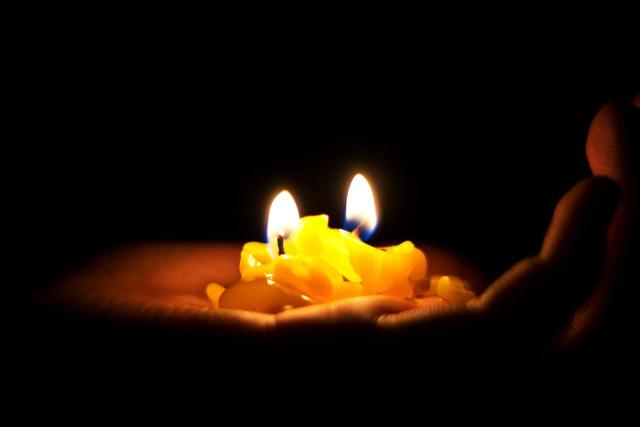Our ingrained notions of black/white and darkness/light as inherently good and evil can guide how we treat each other.

Blackmail. Blackhearted. Black as sin. Washed white as snow. Over time, in our English language, we have become accustomed to equating evil as black, and purity as white. Even the dictionary adds credence to this. One dictionary defines “black” as “without any moral quality or goodness; evil; wicked.” The same dictionary defines “white” as “morally pure; innocent” (from dictionary.com). Similar definitions exist for the words “light” and “dark.”
Our ingrained – and at times binary – notions of black/white and darkness/light as inherently good and evil can guide how we treat each other. At times, we move beyond the association of colours as good and evil, and impose that onto people who represent those colours. Just as blackness personifies evil and impurity, so Black people are evil and White people are good. The prejudices and racism in our language can also guide our prejudice and racism in our treatment of one another, however unintentional and subconscious this treatment may be.
Globally, this black/white and darkness/light dichotomy can result in internalized racism. For example, we might notice people in South Asia using skin-lighteners to make their skin lighter and closer to the skin colour seen as “pure.” We might notice people of the Caribbean taking great efforts to ensure that their skin does not become any darker. We might notice people in the Americas intentionally surrounding themselves with people who have fairer skin because they might say that fair-skinned people are as more socially acceptable, more pure, and more innocent. The internalized notions of light and darkness as good and evil permeate aspects of our everyday life.
What then do we do when the Bible and Christian rituals are filled with images of light and darkness as goodness and evil, especially in the Advent season? In Advent, we light candles to signify the coming of the Risen One. As more and more light enters into our churches each week as we draw closer to the celebration of Christmas, we move closer to the celebration of moving away from a time of darkness.
Both in society and in church school, we are taught of how we should speak of darkness and light. The result is that people who are dark-skinned (such as myself), people who hold internalized notions of darkness as always evil, and people who have grown up in a context where everything black is referred to as impure can find it difficult to enter into these biblical texts and rituals. People who are seen to personify evil can find it difficult to refer only to light as goodness.
How then, do we speak of darkness and light? Are we simply too sensitive? Do we throw out all biblical references to light?
Surely not. What we need is balance. We are constantly evolving in our understanding of an omnipotent God, and in our knowledge of God’s word revealed in scriptures. We are also people who use ever-expanding wording in worship. For example, many of our churches use inclusive and expansive language when referring to God. Many among us have move beyond only referring to God as "He," and additionally use beautiful, descriptive, and wonderful ways of speaking of our Creator, Sustainer, and Redeemer. There are also many different ways of describing God in the United Church's Song of Faith. Such words reveal God to many of us in ways that move far beyond our imaginations and enable many of us to enter into deeper relationships with the Risen One.
Could not a similar principle apply when speaking of darkness and light? Surely we can expand our vocabulary so that darkness does not always equate evil, and light does not always equate good. After all, in reality, such a simplistic dichotomy does not exist.
In reality, darkness can be seen as comfort as a refugee is fleeing a time of war and unrest; light in this circumstance, could lead to death. Darkness could be seen as a wonder to explore, full of Holy Mystery; light, could be seen as a harsh reality, revealing a blinding light.
It is my prayer that we can move beyond simple definitions of darkness as bad and light as good. Let us search for those scriptures that speak of darkness as goodness and as a comfort. And, through our faithful efforts, may all people enter into a fuller image of the Christ whose coming we prepare for during the Season of Advent.
—Adele Halliday is the Anti-Racism and Equity Lead at the General Council Office of The United Church of Canada. She has written many different articles and educational resources for Seasons of the Spirit and Seasons Fushion over the years.
A version of this article originally appeared in Seasons of the Spirit, Congregational Life, for Advent/Christmas/Epiphany.
Copyright © Seasons of the Spirit, 2008. Used by permission.